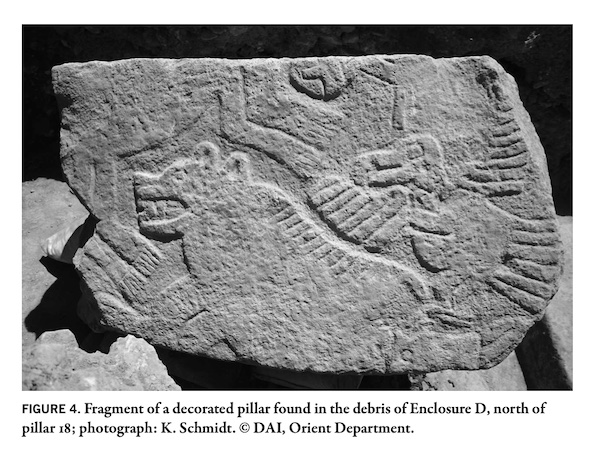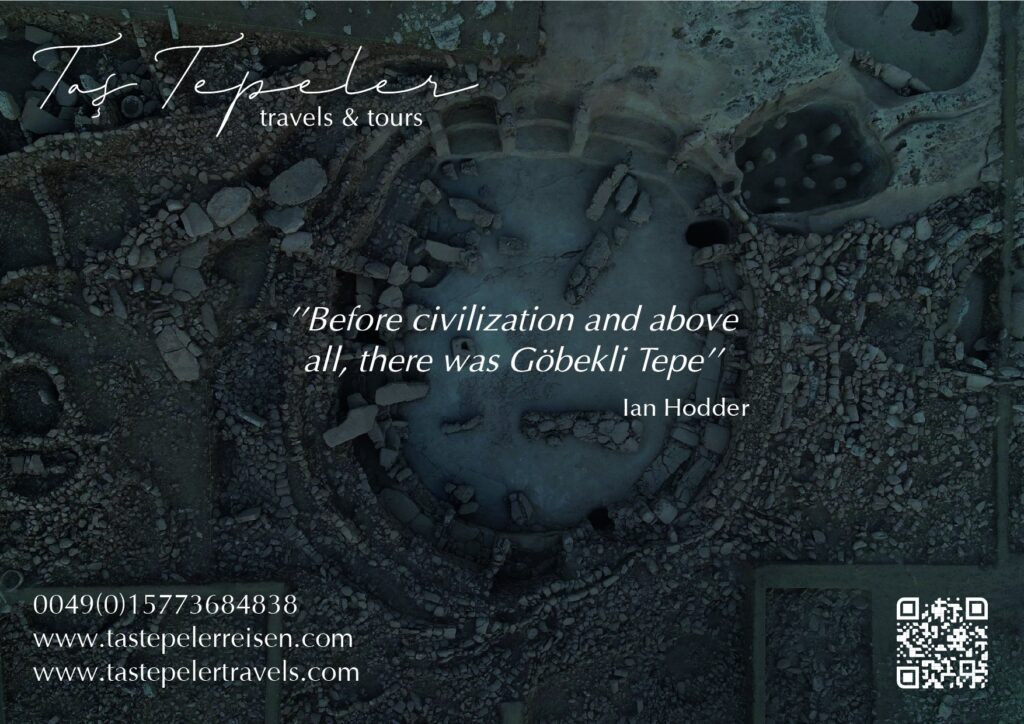
Symbolism and Sacrifice at Göbekli Tepe
Catalhöyük, dating from 6,400 to 6,200 bce, presents evidence of one of the earliest human settlements: its construction, its social organization, its symbolic, artistic, and ritual life. A lesser known, but much earlier and potentially even more signiicant link in the evidential chain of the story of “how we became human” is provided by another archaeological site, situated some 450 miles east-southeast of Çatalhöyük. his site, generally recognized to be a temple complex, has been discovered at Göbekli Tepe (literal translation: “Potbelly Hill”) in southeastern Turkey, near the present-day frontier with Syria. It lies about fifteen kilometers northeast of the present-day city of Şanlıurfa, at the highest point of an extended mountain range that can be seen from many kilometers away. To this day, it is a land- mark visible from afar. Looking toward the Middle East’s fertile crescent, it may be said to be sited at a nodal point of the great migration “out of Africa.”


